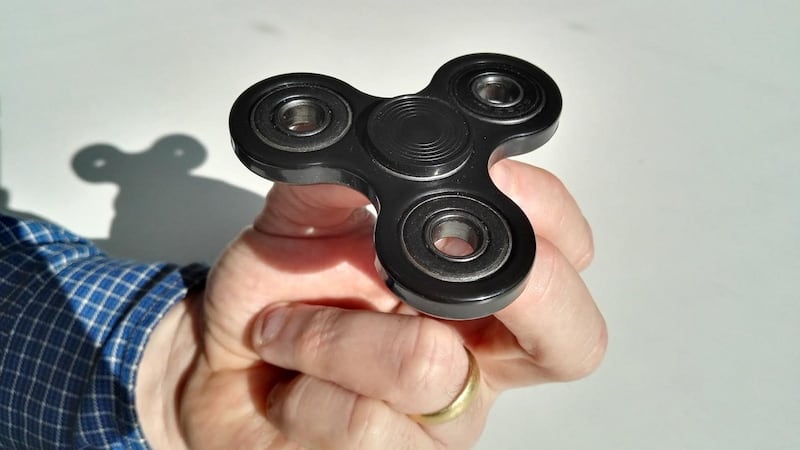The trouble with must-have toys is that you never have them when you really, really want them.
The fidget spinner is the toy of the season. An overnight sensation after 20 years, it was invented in 1997 by Florida woman Catherine Hettinger for her seven-year-old daughter.
Much to her chagrin now, she lacked the $400 patent renewal fee in 2005 - and now must watch as the invention which ought to have made her a millionaire sweeps the globe.
Fidget spinners have become so popular that a sales company in the US has sold an astounding 20 million of the toys to America’s biggest retailers.
A fidget spinner consists of a central ballbearing, around which spins two to three prongs. It resembles a metal frisbee or boomerang.
Key to success
Its very simplicity as a toy may be the key to its success. YouTube has hundreds of videos of enthusiasts playing with the spinners, passing them from hand to hand, tossing them in the air or whirling them around their back.
The spinners have gone viral on the back of word of mouth and social media. “Unfortunately, we placed an order when the craze happened two weeks ago,” said Alison Tobin, the manager at Toymaster in Greystones. “We have been inundated. It’s like the Frozen doll all over again. We’re hoping to have stock next week.”

Smyths in Jervis Street, Dublin, was taking orders online for the fidget spinner but none will be available until May 23rd.
‘It’s unbelievable’
A few doors down, Banba said it will have stock on Friday, having ordered the spinners over a month ago. “Every second person. It’s unbelievable,” said one shop assistant of demand for the toys. “If only I had a euro for everyone who asked for one,” said another assistant.
Just a few feet away on Henry Street, one is never out of earshot of vendors selling them. Two- or three-pronged, multi-coloured and illuminated, they are selling for €5 to €7.
Why such an abundance of them on the street and not in the shops? The man from Banba says the reason is simple: every toy sold in the European Union must have the CE (Conformité Européene) label signalling it has been approved for the use of children.
The shops can only sell fidget spinners from approved manufacturers.
No deterrence
Sure enough, none of the spinners being sold on Henry Street have the CE label, but that little detail is not deterring people from buying them.
One vendor, who calls herself “Rose”, said she has been selling them for the last two weeks. How many has she sold? “I don’t really want to go into that,” she said laughing. “You’ll get me arrested.”
Anecdotal evidence suggests the fidget spinners are good for children with autism or attention deficit hyperactivity disorder (ADHD), giving them something to occupy their minds - hence the name.
Elaine Fitzgerald says her son George (5) is “immersed” in his. “He puts it on the floor and he spins it. He puts it on the tops of his finger and gets his sister to spin it for him. Children have better imaginations than we have.”





















